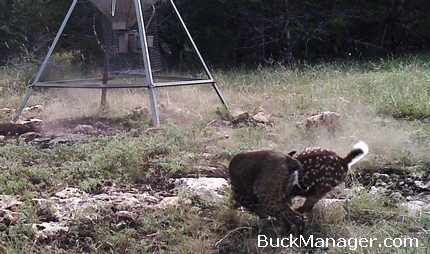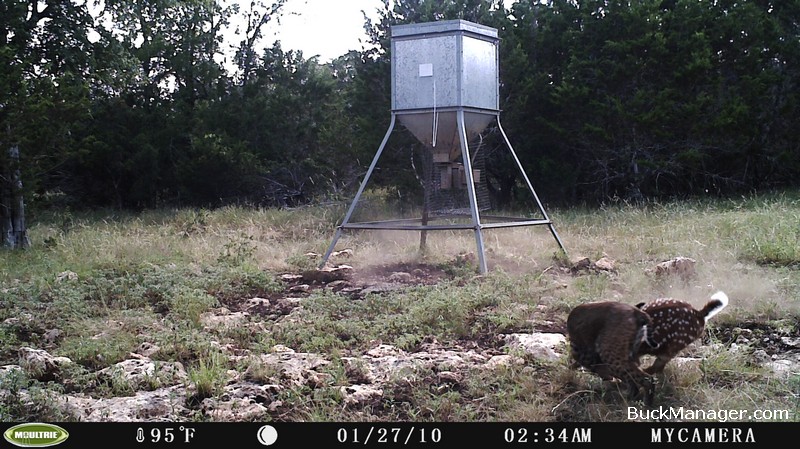Predator control can be an integral part of a white-tailed deer management. Regulating predators should be a year-round activity on properties that are serious about the task, but it’s usually right about the time fawns start hitting the ground that hunters think about doing it. Limiting predators can work well when used hand-in-hand with other practices such as habitat management and supplemental feeding. Though there are many things looking to chow down on a deer, the “whitetail killer” that gets most of the attention is the cunning coyote.
They are smart. They do get a lot of attention from hunters, and for good reason. The coyote is the most abundant predator on the landscape with the ability to take whitetail, especially when they pack hunt. Case in point: Recall the article where a group of coyotes kill a whitetail buck on game camera? But as much attention as song dogs get, they aren’t the only game in town. Bobcats can also do a number on deer, especially when it comes to fawns.

Bobcat Goes for the Kill
The game camera photo below shows a whitetail fawn being attacked by a bobcat while near a deer feeder. The photo was taken in Central Texas within the last month. And yes, the date and time on the camera are wrong because apparently the hunter did not set them.
That’s not uncommon — and neither are fawns in the bobcat diet when recently-born whitetail fawns are available. Research conducted in Texas found that the bobcat diet contains more deer during the month of June than any other time of the year. Coincidence? No.

It is, however, believed that bobcats have a more limited impact on adult deer than coyotes despite the fact that bobcat attacks on adult deer have also been photo-documented. I would imagine that the majority of adult deer killed by bobcats are already either sick or injured. I also suspect there are individual cats that operate as exceptions to this rule.
It’s unlikely that predator control as a component of a deer management program would have a “bobcat-only” control aspect, but rather their numbers would be reduced through general predator control tactics that target coyotes, bobcats and feral hogs. Bobcats, though shy like other felid species, are susceptible to snares, #3 leg-hold traps, and calling and shooting, with the latter being the most targeted method. Like anything, it takes experience with predator control to become proficient at it.
Predator Control and Deer Management
Should intensive predator control be a part of your deer management program? Maybe. Maybe not. It all depends on the characteristics of the deer herd in question as well as the potential for the habitat found on the property to provide the protection that deer need. Quality habitat will alleviate a lot of predator issues. On the other hand, poor deer habitat will likely compound them. An absence of grass and tall forbs makes fawns really easy to find. A lack of screening cover (trees, shrubs, tall grass) makes every deer easy to find.
Controlling predators is a management tool that must be evaluated on a property by property basis. Predators are a part of the natural system, but the impact they have on a specific property may not fit into your deer management plan. High fenced properties, specifically smaller ones, should consider predator management for the sake of the deer herd. I’ve seen several situations where coyotes in particular have drastically reduced deer populations.
Before declaring all-out-war on predator populations it is important to consider a few things. Are predators such as coyotes, bobcats or even feral hogs limiting the deer population on the property you hunt or manage? If predators are controlled, can the property support more deer without a decline in habitat quality? Are you prepared for more time spent deer hunting, increased harvest and the removal of surplus deer, and will those animals be used?
I am a predator control trapper from SE Arkansas. I can attest to the huge and positive impact that quality predator control will give you. However if you want real results simply giving a fur trapper permission to trap your land wont get it. Because they will leave seed for the next years fur season. A true predator control trapper will load the track of land down with many traps per acre and get you results. The fee’s are high but remember this is what we do to make a living the expenses are huge. Their are a ton of supply’s and gas money that you have to factor in. Many deer ranch owners and large hunting clubs are a witness that quality predator control is well worth the money.